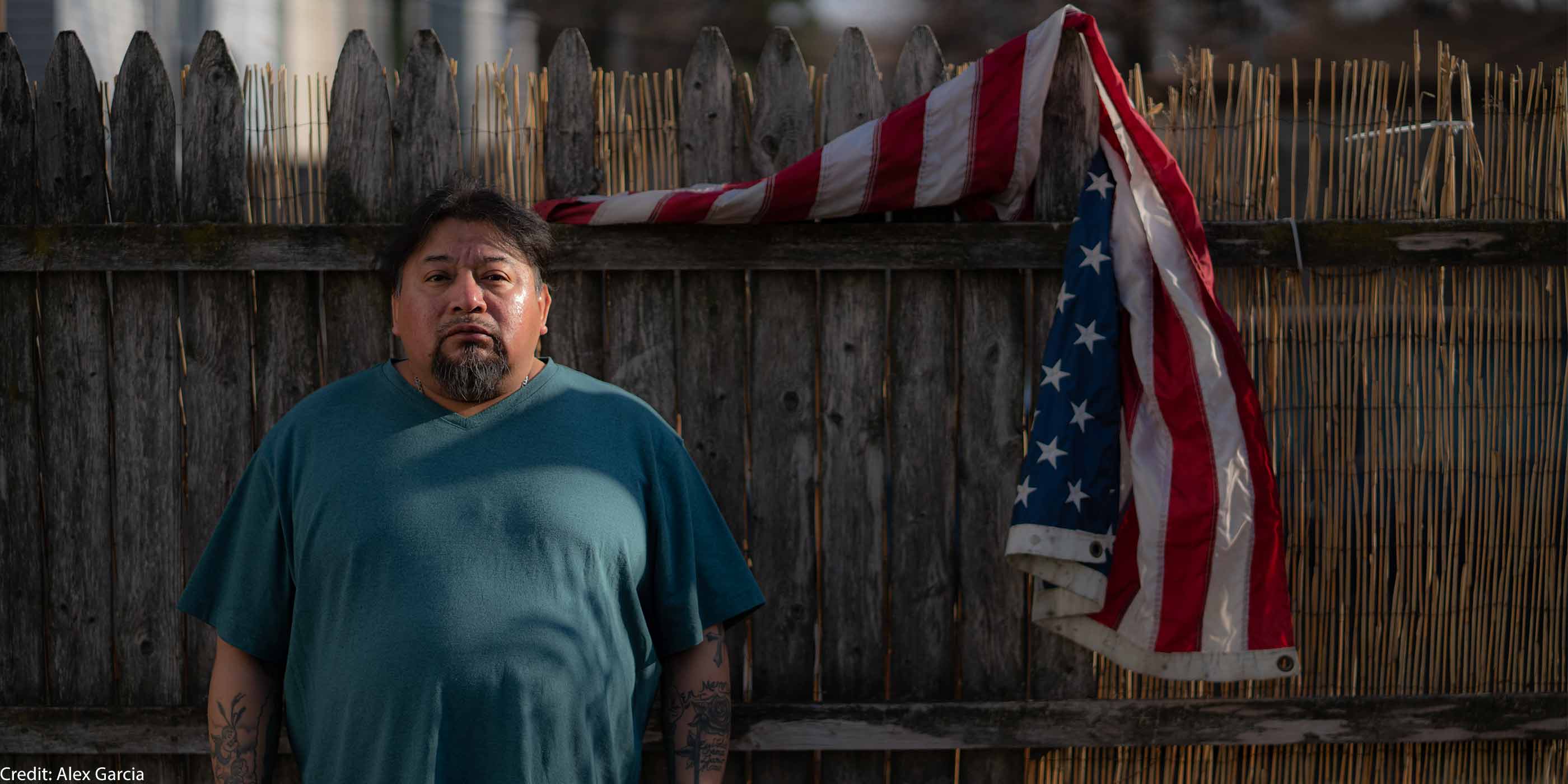This Deceptive ICE Tactic Violates the Fourth Amendment


There’s a knock at your door. It’s the police. They say they are investigating a crime and would like to ask a few questions. It’s alarming, but you want to help, so you let them in.
But what if these officers are not who they say they are?
For years, agents of Immigration and Customs Enforcement (ICE) have impersonated the police and used other deceptive tactics to gain warrantless entry into people’s homes, or lure them out — a practice that the ACLU, in collaboration with others, has challenged in court as a violation of the Fourth Amendment.
ICE’s goal is to arrest and deport undocumented immigrants going about their daily lives — working, commuting, and spending time at home with family. In pursuit of this goal, ICE has used racial profiling and intimidation tactics that instill fear and confusion in communities and stoke mistrust in the police.
Examples of ICE’s ruses include:
- Showing a photo of a random person unknown to the resident and claiming they must verify that no one in the residence fits that description.
- Representing themselves as probation officers and claiming that they are conducting a probation check, or referencing a person’s probation status.
- Tricking people into locating a family member so they can arrest them.
- Pulling over drivers on the road and asking for their license and registration, as if writing a traffic ticket.
- Posing as a civilian looking for a contractor to work on their house and making an appointment for an estimate.
- Disguising themselves as day laborers by wearing bandanas and driving a vehicle carrying a ladder.
The ACLU and co-counsel partners have filed lawsuits to challenge these practices in California and Illinois. Below, two of the clients share their experience being trapped by ICE, and the repercussions that continue today.
Alyssa

ICE knocked on Alyssa’s door at 8 a.m. and pretended to be inquiring about her car registration.
Tara Pixley
ICE ruses often take place early in the morning, when they can catch people as they are waking up or getting ready for work. They wear shirts or vests with the word POLICE emblazoned across, and often announce that they are “police” at the front door, without informing community members that they are ICE. That’s what happened to Alyssa Lazo,a prior DACA recipient who lives in Los Angeles. Alyssa spent 21 days in immigrant detention after ICE tricked her into thinking they were inquiring about her car registration. The effects of the incident last to this day, impacting decisions about who to trust and when to call for help.
Below, Alyssa describes what happened when ICE came to her door, and how it’s still impacting daily life.

Alyssa’s experience with ICE still impacts her decisions about who to trust and when to call for help.
Tara Pixley
But the fear stays with me. I feel like I’m being watched and as if ICE could show up at any moment, disguised as the police again.
Alyssa Lazo
One morning, I woke up to the sound of banging on my front door. I was alarmed — it was only 8 a.m. Through the peephole, I could see three people in dark clothing on the other side of the door. They said they were the police, and they were looking for me.
“Are you Alyssa Lazo?” they asked.
I had no idea how they knew my name or why they would be looking for me, but when they said it was about my car, I thought there might have been some issue with my registration. I had just been to the DMV a couple of weeks prior. Maybe I had done something wrong with the paperwork. They asked to see my car registration, and I indicated it was in my car. When I stepped outside my home to get my car registration documents, they stopped me and told me they were ICE — not the police — that I was here illegally, and that I was now in federal custody.
I was shocked, scared, and confused, because I was a DACA recipient. My lawyer never mentioned that this could be a possibility. I’d seen it on TV — people getting handcuffed and taken away — but I never thought it could be a possibility for me because I was taking care of my paperwork. But they didn’t care about that.
At that point, we were on the landing of my apartment building, and I could see my neighbor listening from inside his apartment while the ICE agents handcuffed me and took me away to the detention center. I was called an “alien,” a “threat to society,” and ended up spending 21 days in custody.
Ever since that day, I’ve been afraid of talking to the police for anything. Not even when I really need help. Even if I was being abused, stalked, or just terrified, I still wouldn’t call the police. I would call my sister instead.
But the fear stays with me. I feel like I’m being watched and as if ICE could show up at any moment, disguised as the police again. That fear has slightly decreased under the Biden administration. But there’s always the possibility that it could happen again. ICE should not be disguising themselves as the police. Now, every time I see the police, I wonder if they are undercover. But until the Biden administration does something to stop ICE from doing that, all we can do is be aware, be prepared, and know our rights. No one should have to face what I faced that day, and the fear that continues.
In 2020, the ACLU of Southern California, UC Irvine School of Law Immigrant Rights Clinic, and the law firm Munger, Tolles & Olson LLP filed a class action lawsuit on behalf of Osny Sorto-Vasquez Kid, the Inland Coalition for Immigrant Justice, and the Coalition for Humane Immigrant Rights. ICE tried to get the case dismissed, but the court denied the motion in April 2021. Early this year, a federal court granted class certification — recognizing that many people in Southern California share a similar claim against the deceptive practices by ICE.
Margarito

Margarito wants to share his story to help others who may find themselves targeted by ICE.
Alex Garcia
Within just six days in May 2018, ICE arrested and detained more than 100 people across the Chicago area in “Operation Keep Safe.” As part of the operation, ICE agents saturated known Hispanic areas of the city of Chicago and surrounding communities accosting anybody who “looked” undocumented, and used unmarked vehicles to feign routine traffic stops. The ACLU has received reports from across the country of ICE agents barricading cars with their vehicles, approaching people with rifles pointed, and threatening to shoot.
Margarito Castañon Nava is among those who were unlawfully apprehended by ICE under the guise of a traffic stop, and was detained for 44 days before being released on bond.

Margarito looks out of a window in his home.
Alex Garcia
The whole time I was in custody, I had very little information about when I would see a judge or what was going to happen to me. They never showed me an arrest warrant.
Margarito Castañon Nava
On my way home from work one evening, I noticed a black SUV behind me. It seemed to be following me. There were no lights and no siren, but its tinted windows made me think of the police.
Suddenly the SUV barricaded my truck on the side of the road, and three people stepped out. It seemed I was right: they were wearing vests that said POLICE in large letters across the front.
The officers were speaking mostly in English, so I couldn’t understand what they were saying. My boss, who was with me in the passenger seat, translated for me. But there wasn’t much information to translate, because they never gave a reason why we were pulled over. All they did was ask us where we worked, to see our driver’s licenses, and to take our photos.
When I handed them my driver’s license, they threw it on the dashboard, handcuffed me to the steering wheel, and took my thumbprints and my photo. I watched them return to the SUV through the rearview mirror. When they returned, they put me in their car and drove us away. The agents never said who they were or where they were taking us, or why. It was only when we arrived at the detention center that I found out they were not the police, but ICE.
The whole time I was in custody, I had very little information about when I would see a judge or what was going to happen to me. They never showed me an arrest warrant. I tried to call my wife, but she didn’t pick up since she didn’t recognize the number. I was worried that they were going to send me back to Mexico and I wouldn’t be able to see my family again.
In the end, I was detained for about a month and a half. I missed my daughter’s quinceañera and my other two children’s last days of school. I still can’t believe government agents are pretending to be the police and locking people in detention for no good reason. But that’s what happened to me. The only reason I could think of is because my coworker and I appear Hispanic. ICE shouldn’t be catching people just because of the color of their skin.
I think things are changing now that there is a new president. If President Biden really cares about immigrants, I would ask him to help us get our papers so we can be able to visit our families. I have a work permit now, but I haven’t seen my family in Mexico in 23 years. If we could get our legal documents, I would be very, very happy.
In 2018, Margarito joined a class action lawsuit brought by the ACLU and the National Immigrant Justice Center, along with other individuals swept up in Operation Keep Safe the immigrant rights organizations Organized Communities Against Deportation and Illinois Coalition for Immigrant and Refugee Rights. In 2022, the court approved a final settlement between the plaintiffs and DHS. Among other terms, the 3-year settlement requires ICE to adopt a nationwide policy barring many traffic stops and warrantless arrests, and allows ICE detainees to challenge detentions that violate the agreement in Illinois, Wisconsin, Indiana, Missouri, Kansas, and Kentucky.
After achieving this victory, Margarito wanted to share his story to help others who may find themselves in similar situations.
Immigration arrests rose under the Trump administration, as did ICE’s use of ruses and its collaboration with police through the 287(g) program. The latter, while predating Trump, put more people under the threat of deportation by allowing local law enforcement to carry out duties normally reserved for federal ICE agents. That ICE itself is impersonating the police only foments confusion and fear of law enforcement in immigrant communities. As a result, many immigrants and their friends and family members are less likely to come forward as witnesses, provide crime tips, or seek police protection, even in emergencies.
Before taking office, President Biden pledged to roll back harmful immigration practices and hold law enforcement accountable for unlawful behavior. But ICE is still impersonating the police and misrepresenting its purpose and getting away with it. By allowing this practice to continue, the Biden administration is undermining its own efforts to repair Trump-era abuses.
The ACLU is urging Biden to reform ICE — particularly to prevent a future anti-immigrant administration from resuming Trump administration efforts to make the United States a hostile, dangerous place for our immigrant neighbors and loved ones. Necessary reforms include strict limits on any street arrests, dismantling programs that use local law enforcement to help deport immigrants, like 287(g), and prohibiting federal agents from impersonating local police.
Necessary reforms include strict limits on any street arrests, prohibiting federal agents from impersonating local police, and stopping ICE from tapping local police to do its bidding, including through the 287(g) program.
In the meantime, people in immigrant communities can defend themselves by knowing their rights. Anybody confronted by law enforcement — whether undocumented or not — can and should do their best to verify the officers’ identity and purpose, document the encounter, and report what happened. More information in English and Spanish can be found here.

